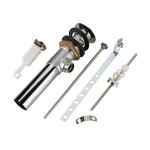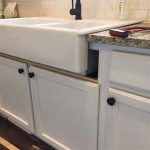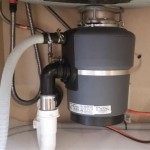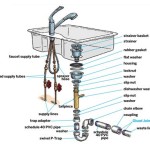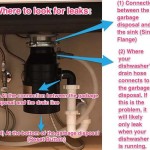Cold Water Filter Under Sink: A Comprehensive Guide
The modern home increasingly demands convenience and purity, especially when it comes to drinking water. A cold water filter under sink system offers a practical solution by providing chilled, filtered water directly from the kitchen faucet. This article delves into the intricacies of these systems, exploring their benefits, components, installation, maintenance, and factors to consider when selecting the right model.
Under sink water filtration systems, in general, are point-of-use (POU) systems, meaning they filter water at a specific location, usually a kitchen sink. This differs from whole-house filtration systems that treat water entering the entire home. Cold water under sink filters specifically incorporate a chilling mechanism in addition to the filtration process. This provides a more convenient alternative to using ice or refrigerators to cool drinking water.
Benefits of Cold Water Filter Under Sink Systems
Installing a cold water filter under sink system offers several advantages. The most prominent benefit is the accessibility of chilled, clean water on demand. This eliminates the need to store water bottles in the refrigerator or wait for pitchers of water to cool. Convenience plays a significant role, especially for individuals and families who consume large quantities of water throughout the day.
Improved water quality is another crucial benefit. These systems effectively remove a wide range of contaminants, including sediment, chlorine, lead, bacteria, and volatile organic compounds (VOCs). The filtration process enhances the water's taste and odor, making it more palatable and encouraging increased hydration. Different filter types target specific contaminants, allowing users to customize their filtration based on local water quality reports and concerns.
Environmental impact is also a considerable factor. By providing readily available filtered water, these systems reduce reliance on bottled water. The production, transportation, and disposal of plastic water bottles contribute significantly to environmental pollution. Switching to a cold water filter under sink system minimizes this impact and promotes a more sustainable lifestyle.
Cost-effectiveness is an important consideration. While the initial investment in a cold water filter under sink system may seem significant, the long-term cost savings can be substantial. The ongoing expense of purchasing bottled water or replacement water filters for pitchers quickly adds up over time. Under sink filters typically require replacement every several months or years, depending on the filter type and water usage, resulting in lower overall costs compared to bottled water.
Components of a Cold Water Filter Under Sink System
A typical cold water filter under sink system comprises several key components working in tandem to deliver chilled, filtered water. Understanding these components is essential for proper installation, maintenance, and troubleshooting.
The
filtration unit
is the core of the system. It houses one or more filter cartridges that remove impurities from the water. Common filter types include sediment filters, carbon filters (activated carbon or granular activated carbon), and specialized filters designed to target specific contaminants like lead or arsenic. Some systems employ multi-stage filtration, using a series of filters with different functionalities to achieve comprehensive water purification.The
chilling unit
is responsible for cooling the filtered water. This typically involves a small refrigeration system similar to those found in refrigerators or water coolers. The chilled water is stored in a reservoir within the unit, ready for dispensing. The cooling efficiency and reservoir capacity vary between different models, influencing the amount of chilled water available and the time it takes to cool new water.The
faucet
is the point of dispensing the filtered water. Many cold water filter under sink systems include a dedicated faucet that is installed separately from the existing kitchen faucet. These faucets are often designed to complement the kitchen decor and are available in various styles and finishes. Some systems can be connected to an existing faucet using a diverter valve, although this may require modifications to the plumbing.The
tubing and fittings
connect the various components of the system, ensuring a leak-proof and reliable water supply. These components are typically made of food-grade plastic or stainless steel to prevent contamination. Proper installation of the tubing and fittings is crucial to avoid leaks and ensure optimal system performance.The
power supply
is required to operate the chilling unit. The system typically plugs into a standard electrical outlet. Energy efficiency is an important consideration when selecting a cold water filter under sink system, as the chilling unit will consume electricity continuously.Installation and Maintenance
Installing a cold water filter under sink system can be a straightforward DIY project for individuals with basic plumbing skills. However, professional installation is recommended for those who are uncomfortable working with plumbing or electrical systems. Proper installation ensures optimal system performance and prevents leaks or other issues.
Before beginning the installation process, it is essential to gather the necessary tools and materials, including a wrench, screwdriver, drill (if installing a dedicated faucet), Teflon tape, and safety glasses. The system should be installed in a location that is easily accessible for maintenance and filter replacement. Shutting off the water supply to the sink and disconnecting the existing water lines are crucial safety precautions.
The installation process typically involves connecting the system's inlet tubing to the cold water supply line using a T-fitting or adapter. The outlet tubing is connected to the dedicated faucet or the existing faucet using a diverter valve. The filtration unit and chilling unit are securely mounted under the sink, and the power supply is plugged into an electrical outlet.
Regular maintenance is essential to ensure optimal performance and longevity of the cold water filter under sink system. The most important maintenance task is replacing the filter cartridges according to the manufacturer's recommendations. Filter replacement frequency depends on the filter type, water quality, and water usage. Failure to replace filters regularly can result in reduced filtration effectiveness and potential contamination of the water.
The chilling unit should also be cleaned periodically to prevent the buildup of scale or bacteria. This can typically be done by flushing the system with a diluted bleach solution or a specialized cleaning agent. Regularly inspecting the tubing and fittings for leaks is also important to prevent water damage.
Troubleshooting common issues, such as leaks, slow water flow, or unusual noises, is also part of regular maintenance. Leaks can often be resolved by tightening fittings or replacing worn-out O-rings. Slow water flow may indicate a clogged filter or a low water pressure issue. Unusual noises may indicate a problem with the chilling unit or the water pump.
Factors to Consider When Choosing a System
Selecting the right cold water filter under sink system requires careful consideration of several factors. Water quality, filtration needs, cooling capacity, space constraints, and budget are all important considerations.
Water quality
is a primary factor. Analyzing local water quality reports will identify specific contaminants that need to be addressed. Different filter types target different contaminants, so choosing a system with filters that are effective against the specific contaminants in the local water supply is crucial. Consider contacting a local water testing service for a comprehensive analysis if you have concerns.Filtration needs
vary depending on individual preferences and health concerns. Some consumers prioritize the removal of chlorine and sediment to improve taste and odor, while others are more concerned about removing lead, bacteria, or VOCs. Choosing a system with multi-stage filtration or specialized filters can address these specific needs. Consider NSF certifications to ensure filters meet specific performance standards.Cooling capacity
refers to the amount of chilled water the system can produce and store. Larger households or individuals who consume large quantities of chilled water may require a system with a larger reservoir and a more powerful chilling unit. Consider the cooling rate, which determines how quickly the system can cool down new water.Space constraints
under the sink are another important consideration. Under sink water filter systems vary in size and shape, so it is essential to measure the available space before purchasing a system. Choose a system that fits comfortably under the sink without obstructing access to other plumbing or electrical components.Finally,
budget
plays a significant role in the decision-making process. Cold water filter under sink systems range in price from a few hundred dollars to several thousand dollars. Consider the initial cost of the system, as well as the ongoing costs of filter replacements and electricity consumption. Balancing features, performance, and affordability is key to finding the right system.
Insinkerator F 1000s Water Filtration System

How Undersink Filters Work Pure Water S Llc

Brio Premier Under Sink Hot And Cold Water Dispenser Stainless Steel

Insinkerator F 1000s Water Filtration System

Aquasana Under Sink Water Filter System Claryum Direct Connect Aq Mf 1

Installing An Under Sink Water Filter Fine Homebuilding

Under Sink Hot And Cold Water Dispenser Ht100 Dawnway Manufacturer

Icepure Under Sink Water Filter System

Max Under The Sink Ro System

Insinkerator F 1000s Water Filtration System
